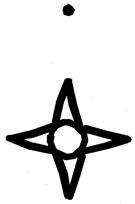Anthropology, Department of

Nebraska Anthropologist
ORCID IDs
0000-0002-2156-7060
Date of this Version
2024
Document Type
Review
Citation
Nebraska Anthropologist (2024) 30
Abstract
Review of Queer Kinship: Race, Sex, Belonging, Form, 1st edition, edited by Tyler Bradway and Elizabeth Freeman. 2022. Duke University Press, Durham, North Carolina, USA. vii + 352 pp. Reviewed by Patrick Barchett, University of Nebraska-Lincoln.
Due widely to the inaccessible nature of “nonnormative” sexualities and genders in many ethnographic studies, queer kinship tends to be left out of many kinship classes and discussions. However, Queer Kinship: Race, Sex, Belonging, Form (edited by Tyler Bradway and Elizabeth Freeman) discusses not only queer kinship in the sense of LGBTQ+ kinship, but also other forms of nonnormative kinship structures, such as sworn brotherhoods throughout Chinese history (Chapter 12). The authors do an excellent job consistently discussing intersectional identities, shared trauma, decolonization, creation/destruction of kin, and many other topics that tend to be ignored in discussions of kinship or tend to solely be viewed through a cis-heteronormative or descent-only lens. This text widely moves past reproduction, biology, and the nuclear family and embraces kinship and family as so much more than the people that we would inherit goods or status from upon death. Throughout the chapters, the authors continuously act as advocates for marginalized identities, and acknowledge that much of kinship, especially the publicization of it, acts as a form of social control over populations, such as who can and cannot be legally married. The overarching argument of the text is that kinship can and should include relationships, genders, and sexualities that go beyond normative kinship structures. They also often discuss how kinship has historically been used violently against marginalized groups. This kin-based violence is held against the LGBTQ+ community with limitations on legal rights concerning partnerships and marriages, the Black community with modern stereotyping as well as historical slave relations, and indigenous communities with blood quantum laws.
At times, the various authors used complex language that would make it difficult for people without backgrounds in cultural anthropology to understand. This is a limitation of the text and would decrease the level of accessibility to the knowledge within. However, much of the text was written with similar language to other kinship texts, so having students in advanced courses read chapters would be beneficial to their understanding of queer kinship. The structure of the text with parts, chapters, and subsections easily allows for the picking out of specific sections that still work with limited context of the chapter or part as a whole. Overall, this text would lend greatly to any course or research project related to queer kinship, especially in discussions about the movement beyond traditional and descent-based family structures (including chosen families).


Comments
Copyright 2024, Patrick Burchett. Used by permission